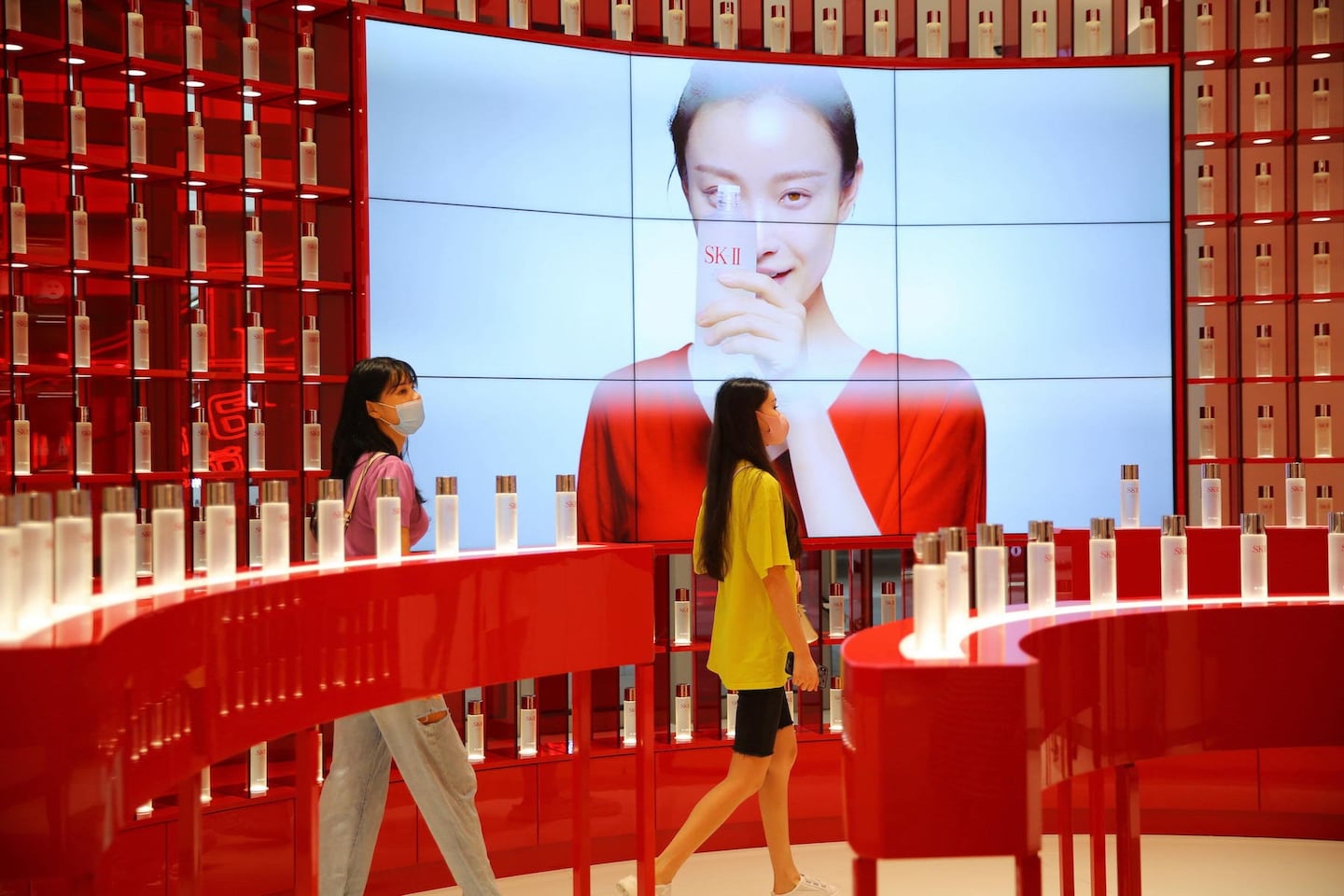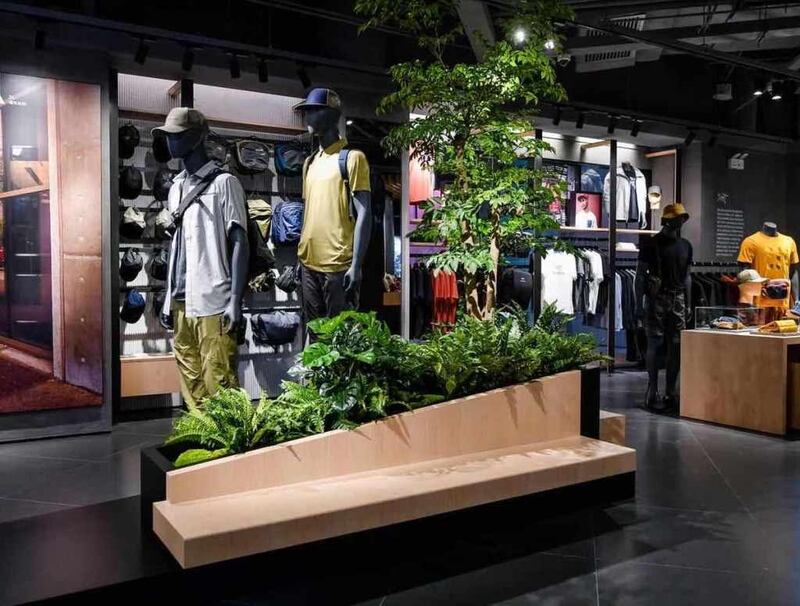
The Business of Fashion
Agenda-setting intelligence, analysis and advice for the global fashion community.

Agenda-setting intelligence, analysis and advice for the global fashion community.

SHANGHAI, China — The duty free market is usually fuelled by Chinese tourists overseas. Amid the pandemic, domestic travellers are helping sustain the struggling sector.
As China gears up for its annual October Golden Week holiday period, its domestic travel retail industry is on an impressive upswing. After a record-breaking summer for domestic travel (and associated travel retail sales), China’s Ministry for Culture and Tourism has estimated that about 500 million inter-provincial trips will be made during the first week of October. Domestic duty free sales are expected to surge.
Elsewhere, the pandemic's impact has been grim. Travel retail industry leader, Dufry, saw its sales decline 62 percent to $1.73 billion in the first half of 2020, while Heathrow Airport's retail revenue was down by 88 percent for the month of July.
Global brands in 2020 have had to pivot with lightning speed to tap into the relatively small, but fast-growing local market.
L’Oréal cited closed airport stores as a key reason its sales fell nearly 20 percent in the second quarter. Over at Procter and Gamble, Chief Operating Officer and Chief Financial Officer Jon Moeller told investors on the company’s third quarter earnings call that the travel retail business was “gone… gone because there is no travel.”
ADVERTISEMENT
The global travel retail sector typically generates $80 billion a year, according to data from travel retail research company Generation Research. Its decline is a disaster for many brands, particularly major beauty players who rely disproportionately on the sector and account for more than a third of its annual sales.
Normally, Chinese tourists overseas drive travel retail. According to Morgan Stanley, Chinese travellers are responsible for 30 percent of global travel retail sales. And it's not just about sales, it's also about discovery: Estée Lauder has said that almost 60 percent of its Chinese consumer base will buy a product from its brands for the first time through points of sale like airport duty free boutiques.
With those consumers stuck in China and central government edicts there moving quickly to boost domestic consumption, global brands in 2020 have had to pivot with lightning speed to tap into the relatively small, but fast-growing local market.
A Much-Needed Silver Lining
China’s travel retail sector was already expanding before the pandemic hit, but while the coronavirus has brought crisis elsewhere, it has turbocharged local growth.
Among other initiatives to stimulate domestic consumption following the country’s lockdown at the start of the year, China’s central government has loosened offshore duty free allowances on the tropical island of Hainan, one of China’s most popular holiday destinations and already a duty free hub.
From July 1, the annual shopping duty free allowance more than tripled to 100,000-yuan ($14,700). The range of duty free categories was also extended from 38 to 45 and the number of cosmetics items that could be purchased per visit rose from 12 to 30. Crucially for the luxury sector, the 8,000 yuan ($1,129) limit for a single tax-free purchase was removed.
The impact of these policies was immediate. In the two months to August 31, offshore duty-free sales in the province soared by 222 percent to 5.58 billion yuan ($815 million), most of it generated by China Duty Free Group’s Sanya Mall in Haitang Bay. To be sure, this still represents a fraction of the global market, but it’s a significant shift and impressive growth.
ADVERTISEMENT
"For now, all roads lead to China and the main highway is going straight to Hainan. Almost everywhere else, travel retail is being stripped of its lifeblood — passenger traffic," said Martin Moodie, founder and chairman of travel retail business intelligence publication, The Moodie Davitt Report.
In the first half of the year, China Duty Free Group (CDFG) leapfrogged international travel retail giants like Dufry and Korea’s Lotte Duty Free, to become the world’s largest duty free retailer by turnover, according to an analysis by The Moodie Davitt Report. CDFG is now poised to be the industry leader in a “new era of duty free,” according to a note by Zheshang Securities analyst Li Dan.
China's domestic duty-free sales could reach $30 billion by 2025.
Chinese passenger traffic to Hainan is only going to accelerate over next week’s October holiday period. This year it overlaps with the Mid-Autumn festival, resulting in a longer, eight-day “Golden Week.” More than 1,000 additional flights are expected to connect Hainan’s main airport with major Chinese cities over the holiday period.
“One market cannot offset a global decline this severe, but given that CDF Mall is one of the main doors worldwide for beauty brands, it’s a vital silver lining in an otherwise pitch black cloud,” Moodie said.
As local travel restrictions continue to loosen, other players stand to benefit too. Quarantine restrictions on the special administrative region of Macau have been lifted ahead of the October holiday period, allowing mainland tourists to secure visas for the first time since January. That’s a boost to LVMH-owned DFS Duty Free Group, which has a significant presence in Macau.
Even after the October holiday period, tax-free retailers are eyeing the potential for further easing of official policies aimed at stimulating domestic consumption, with some surprising beneficiaries.
China’s Duty Free Future Driven By… Department Stores?
A much-quoted report penned by UBS-Securities analyst Chen Xin in July estimated China’s domestic duty-free sales could reach 203 billion yuan ($30 billion) by 2025, implying a 2019 to 2025 compound annual growth rate of 25 percent. Though this would mainly be driven by Hainan’s duty-free market, Chen also predicts that downtown duty free stores could contribute 20 billion yuan ($3 billion) to that total by 2025.
ADVERTISEMENT
The development of downtown duty free is the other main way Chinese authorities are looking to develop the country’s tax free sector, and stimulate consumption among its travel-restricted population of 1.4 billion.
In June, a rare duty-free shopping licence (only the eighth ever granted by China’s Ministry of Finance) was awarded to Beijing-based Wangfujing Group. The news sent the department store operator’s long-moribund share price through the roof. This week, Wangfujing Group Chairman Du Baoxiang announced that the company’s new duty-free subsidiary will develop a tax-free shopping centre at Beijing’s Universal Studios theme park, which is due to open in the first half of next year.
A number of other major department store groups in China have also applied for duty-free business licences, according to recent financial statement disclosures. Candidates include Shanghai’s Bailian Group, the Wuhan Wushang Group and the Nanning Department Store group.
Permanent Change, Or Pandemic Special
Whether China’s duty free market can sustain its pandemic bounce and retain domestic consumers once travel resumes remains an open question.
What is missing from the domestic travel retail is that people are often wanting to buy from the location they are traveling to.
In good news for international destinations reliant on Chinese spending, Swiss market research firm M1nd-set interviewed Chinese travellers in June for a survey that found nearly 80 percent of Chinese would consider travelling by air within the first six months after international travel bans are lifted.
When they can travel, Renee Hartmann, co-founder of consultancy, China Luxury Advisors, is betting their desire to purchase luxury and beauty products abroad will be undiminished.
“Local travel retail solves one of the reasons people buy travel retail, which is price, but another reason… is the cachet of getting something from overseas,” she said.
On the other hand, others see a long-term shift in market share favouring Chinese players.
“We think there will be a permanent shift in favour of domestic travel retail spending,” Moodie said. “However, the Chinese people will (post-Covid) continue to travel in great numbers abroad and will remain the engine room of the trade worldwide.”
Regardless of the long-term fallout, Moodie predicts international brands will continue to reconfigure their global travel retail selection to focus on Chinese consumers in China at least for the second half of this year and first quarter of 2021.
That means on the other side of the crisis, international travel retail players will face more pressure to compete on the calibre and variety of what they offer.
There is little doubt that Chinese consumers will still want to shop while they are traveling overseas. The desire to buy things when traveling that reflect the country travelled to, either as personal mementos or gifts for friends or family, simply can’t be replaced by an increasing availability of duty free shopping domestically.
“People always want a deal...but what is missing from the domestic travel retail is that people are often wanting to buy from the location they are traveling to, there are also travel exclusives, different packaging, you don’t really get all of that,” Hartmann said. “The products are different than what they can get overseas and I think the experience is, too.”
时尚与美容
FASHION & BEAUTY

A style from Li-Ning's Spring/ Summer 2021 collection | Source: Courtesy
Chinese Fashion's Winners and Losers
Domestic fast fashion player Semir saw net profit from its apparel business fall 97 percent in the first half of the year, while operating income declined more than 30 percent. The company suffered from its heavy reliance on physical retail and less developed e-commerce strategy than some competitors. At the other end of the spectrum, Chinese sportswear giant Li Ning is riding high. Its market value set a new record this week, approaching the HK$100 billion mark ($13 billion). (Press Release)
The Power of Li Jiaqi’s Endorsement
If there was any doubt about the influence Li Jiaqi has on his legions of fans, the recent fallout when he ended his long-term contract with Chinese skincare brand Dr Yu should erase them. According to reports, Dr Yu's sales have dropped from 100 million yuan ($14 million) per month at their peak, to 10 million yuan ($1.4 million) per month in August, when Li stopped representing the brand. Beauty industry-focussed WeChat accounts have even speculated about the future of the brand's parent company, domestic beauty giant Shanghai Jahwa, without the livestreaming star. (Cosmetic Capital)
科技与创新
TECH & INNOVATION

Kuaishou's logo | Source: Courtesy
Douyin Short Video Rival Makes Inroads into E-commerce
Kuaishou, the main rival to TikTok's Chinese version, Douyin, said it accumulated 500 million e-commerce orders in August, a strong sign that the app has potential to make money ahead of an expected public listing. The Tencent-backed company is reportedly looking to raise up to $5 billion from an initial public offering in Hong Kong as early as January. Kuaishou declined to reveal its actual sales figure or Gross Merchandise Volume (the most commonly used metric given by Chinese e-commerce companies), but said in a statement that its order volume makes it China's fourth-largest e-commerce player behind Alibaba, JD.com and Pinduoduo. Whether or not that is true, these figures do indicate that many users have bought, or at least considered buying, through its video platform. Many of the products for sale via Kuaishou are produce grown by its large base of rural users. (Techcrunch)
Alibaba Turns Attention to Modernising China’s Factories
China's largest corporation this week unveiled a factory it's been operating under wraps for the past three years. The factory on the outskirts of its hometown of Hangzhou churns out apparel for clothing merchants on its Taobao and Tmall marketplaces. Dubbed Xunxi, the so-called smart or connected factory is designed to showcase Alibaba's newest line of business: offering data analytics and back-end technology to manufacturers so they can customise and fine-tune operations in response to consumer demand. Alibaba is betting its years of observing consumer behaviour will be useful to the country's producers at a time when Beijing is championing what it calls its "Industrial Internet" of smart factories. (Bloomberg)
消费与零售
CONSUMER & RETAIL

The Arc’teryx flagship store in Shanghai | Source: Courtesy
Arc’teryx Global Flagship Opens in Shanghai
Performance apparel brand Arc'teryx has opened a flagship store in Shanghai. Called the Arc'teryx Alpha Center, the store occupies a 750-square-metre area and is the brand's largest in the world. The experiential layout includes a "rain room" in which customers can test the waterproof credentials of the brand's Gore-tex products. Last year, a consortium led by China's Anta Sports acquired Arc'teryx-owner Amer Sports for €4.7 billion ($5.5 billion at current exchange rates). Other investors include private equity firm FountainVest Partners, Chip Wilson-owned Anamered Investments and Tencent Holdings. This new ownership is one reason for increased expansion into China, another is the 2022 Beijing Winter Olympics, which (if it goes ahead as scheduled) will see the government push winter sports over the next few years. (Asia Net News)
René Caovilla Opens First China Boutique
The boutique is located in the luxury fashion landmark, Beijing SKP. René Caovilla had previously launched a flagship store on Tmall, but this marks the beginning of the brand's physical expansion into China. (Retail Leisure International)
政治,经济与社会
POLITICS, ECONOMY, SOCIETY

A promotional image for iQiyi's virtual idol show | Source: Courtesy
China’s New TV Talent Contest is for Virtual Idols
Chinese streaming platform iQiyi is launching the country's first-ever "virtual idol variety show." The new show, which will be called 'Dimension Nova,' will feature "more than 30 virtual competitors [navigating] a series of competitions and challenges to select the final winner." The idols will be judged by humans Esther Yu from THE9 (a pop group created by another of China's idol variety shows), Wang Linkai (of boyband Nine Percent) and actress Angelababy. iQiyi is also the network behind successful manufactured music contest 'The Rap of China' and its rock equivalent 'The Big Band'. (Radii)
China Announces Plans for Three New Pilot Free Trade Zones
China has announced it will set up three new pilot free trade zones (FTZs) as part of efforts to attract foreign investment and boost trade. The State Council, China's cabinet, said on Monday it would further expand the FTZ program, adding zones in the capital city of Beijing, Central China's Hunan province and the eastern province of Anhui. The plan also involves expanding an existing FTZ in the eastern province of Zhejiang and will bring the country's total number of FTZs to 21. The Anhui zone will be spread among the cities of Hefei, Wuhu and Bengbu. The Hunan zone will be spread among the cities of Changsha, Yueyang and Chenzhou. (Reuters)
China Decoded wants to hear from you. Send tips, suggestions, complaints and compliments to our Shanghai-based Asia Correspondent casey.hall@businessoffashion.com.
With consumers tightening their belts in China, the battle between global fast fashion brands and local high street giants has intensified.
Investors are bracing for a steep slowdown in luxury sales when luxury companies report their first quarter results, reflecting lacklustre Chinese demand.
The French beauty giant’s two latest deals are part of a wider M&A push by global players to capture a larger slice of the China market, targeting buzzy high-end brands that offer products with distinctive Chinese elements.
Post-Covid spend by US tourists in Europe has surged past 2019 levels. Chinese travellers, by contrast, have largely favoured domestic and regional destinations like Hong Kong, Singapore and Japan.